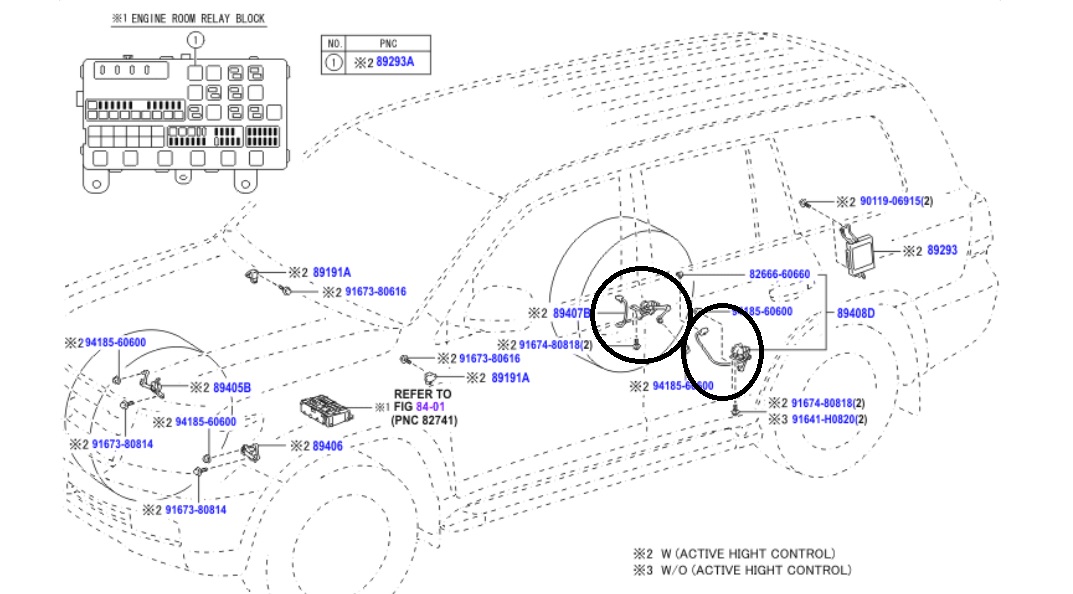The suspension system of a vehicle is critical for ensuring a smooth ride, handling, and proper vehicle dynamics. Among the various models and makes, the Toyota Land Cruiser stands out due to its robust engineering and reputed off-road capabilities. Particularly, the rear active height control (AHC) sensor has garnered attention. This innovative feature enables the vehicle to adapt its suspension height, enhancing both performance and comfort. Understanding the nuances of Land Cruiser suspension and its height control mechanisms offers insight into the technological prowess that defines this legendary vehicle.
At its core, the AHC system employs sensors, actuators, and a hydraulic setup to intelligently adjust the rear suspension’s height in real-time. By modifying the vehicle’s stance, the system optimizes handling, stability, and load management. This adaptability is especially beneficial when the vehicle is laden with additional weight, such as when towing or carrying passengers and cargo off the beaten path.
A common observation among Land Cruiser enthusiasts is their fascination with the vehicle’s ability to traverse diverse terrains with aplomb. This admiration is not solely for its capability; it speaks to a deeper appreciation for the interplay between engineering precision and the natural world. The Land Cruiser is designed to confront challenging environments, striking a balance between ruggedness and comfort.
The paradigm of vehicle height control invites an exploration of how it influences overall performance. The AHC system modulates the ride height through various settings accessible to the driver. These modes often include options for standard ride height, a lower setting for easier ingress and egress, and a raised position for traversing rugged landscapes. Each adjustment alters the vehicle’s center of gravity and, consequently, its handling characteristics.
To fully appreciate how the suspension height impacts performance, one must consider the geometric principles at work. When the vehicle is raised, the approach and departure angles improve, reducing the risk of bottoming out over obstacles. Additionally, elevating the vehicle enhances its ground clearance, which mitigates the likelihood of undercarriage damage on uneven terrains.
Measurement of the Land Cruiser’s suspension height can initially seem daunting. However, it can be simplified into a series of systematic steps. To begin, park the vehicle on a flat, level surface. Ensure that there are no passengers or cargo in the vehicle, as weight can significantly alter the measurements.
Next, utilize a tape measure to ascertain the current ride height. Begin at the center of the wheel hub, measuring vertically to a consistent reference point on the body of the vehicle, typically the lower edge of the fender arch. Record the measurement meticulously. This data serves as the baseline against which adjustments can be gauged.
The height control feature can then be adjusted using the control interface inside the vehicle. Depending on the model year and specific features, various controls may be found within the dashboard or through a dedicated switch on the center console. Each adjustment will trigger a hydraulic response as the system actuators modify the suspension level.
Once the desired suspension height is achieved, it is imperative to re-measure the height as previously conducted. Any discrepancies should be noted and adjustments made to ensure the optimal suspension performance. This process may require iterating several times to achieve the ideal height tailored to both driving conditions and personal preferences.
Beyond height adjustment, maintaining an understanding of the suspension components is necessary for comprehensive vehicle care. Regular inspection of the AHC system, including checking for fluid leaks, actuator functionality, and sensor integrity, can preemptively mitigate issues that may arise. Additionally, checking the alignment and overall condition of the suspension throughout the vehicle’s lifespan enhances suspension reliability and performance.
The implications of proficient suspension management extend beyond mere convenience and comfort. With climate change’s onset, a heightened awareness of environmentally responsible driving and maintenance practices is prudent. By ensuring that vehicles—especially those with off-road capabilities—are operating optimally, we contribute to enhanced fuel efficiency and reduced carbon output. An efficiently functioning suspension system contributes to improved traction and road grip, ultimately leading to lower emissions by reducing the energy required for movement.
The fascination with the Land Cruiser’s height control system reflects a broader narrative about the relationship between vehicles and the environment. As we explore the mechanics behind such features, we grasp how enhancements in automotive engineering can aid in our quest for reduced environmental impact. This intersection of technology and stewardship advocates for vehicles that not only perform brilliantly but also respect the fragile ecosystems they navigate.
In conclusion, understanding the intricacies of the Land Cruiser suspension, particularly the height control mechanism, transcends mere specifications. It is an invitation to appreciate a multifaceted marvel of engineering that elevates driving experience while intertwining with ecological awareness. By investing time in comprehension of these features, vehicle owners can enhance both their driving ventures and their responsibility towards environmental sustainability.
